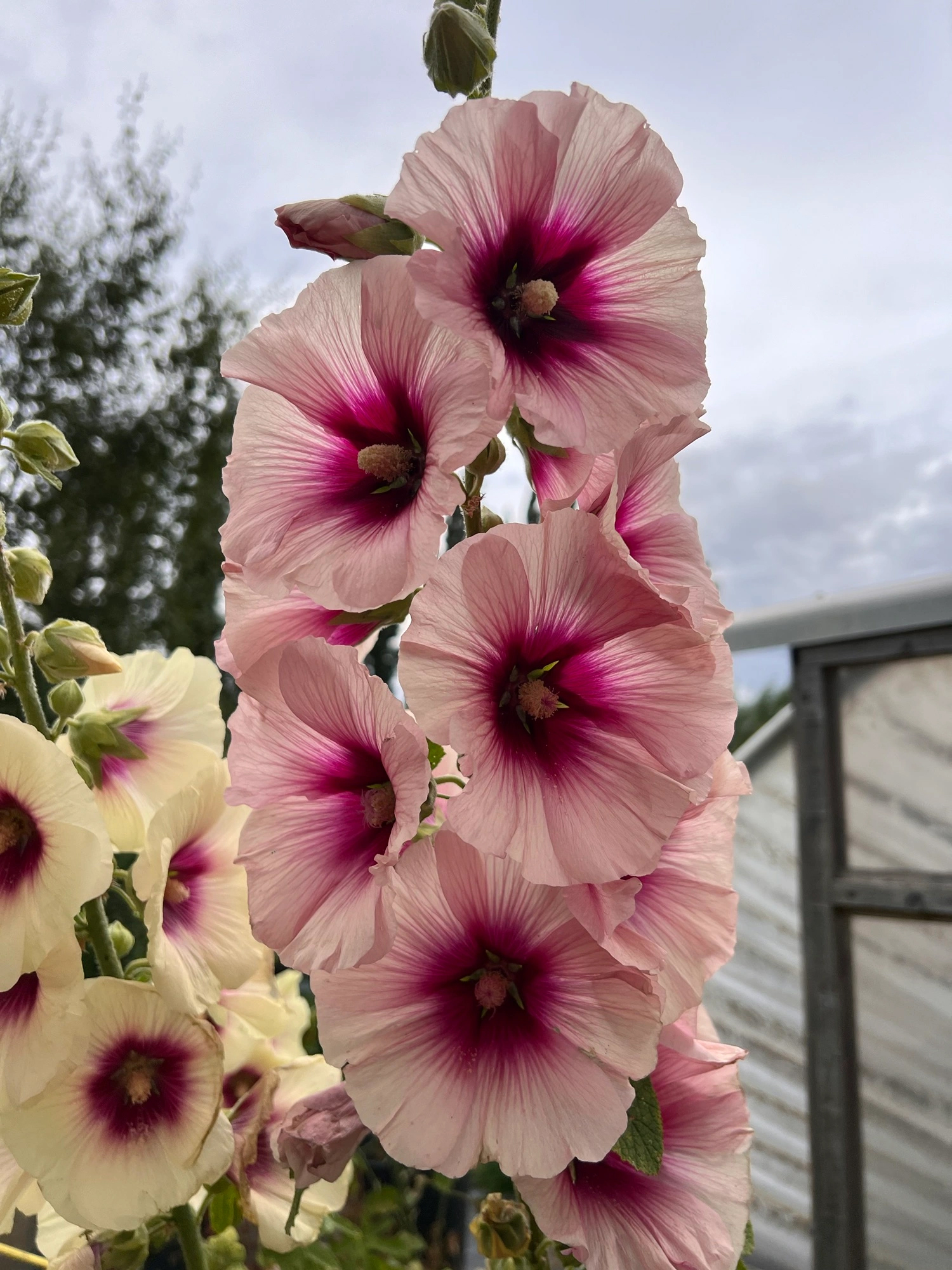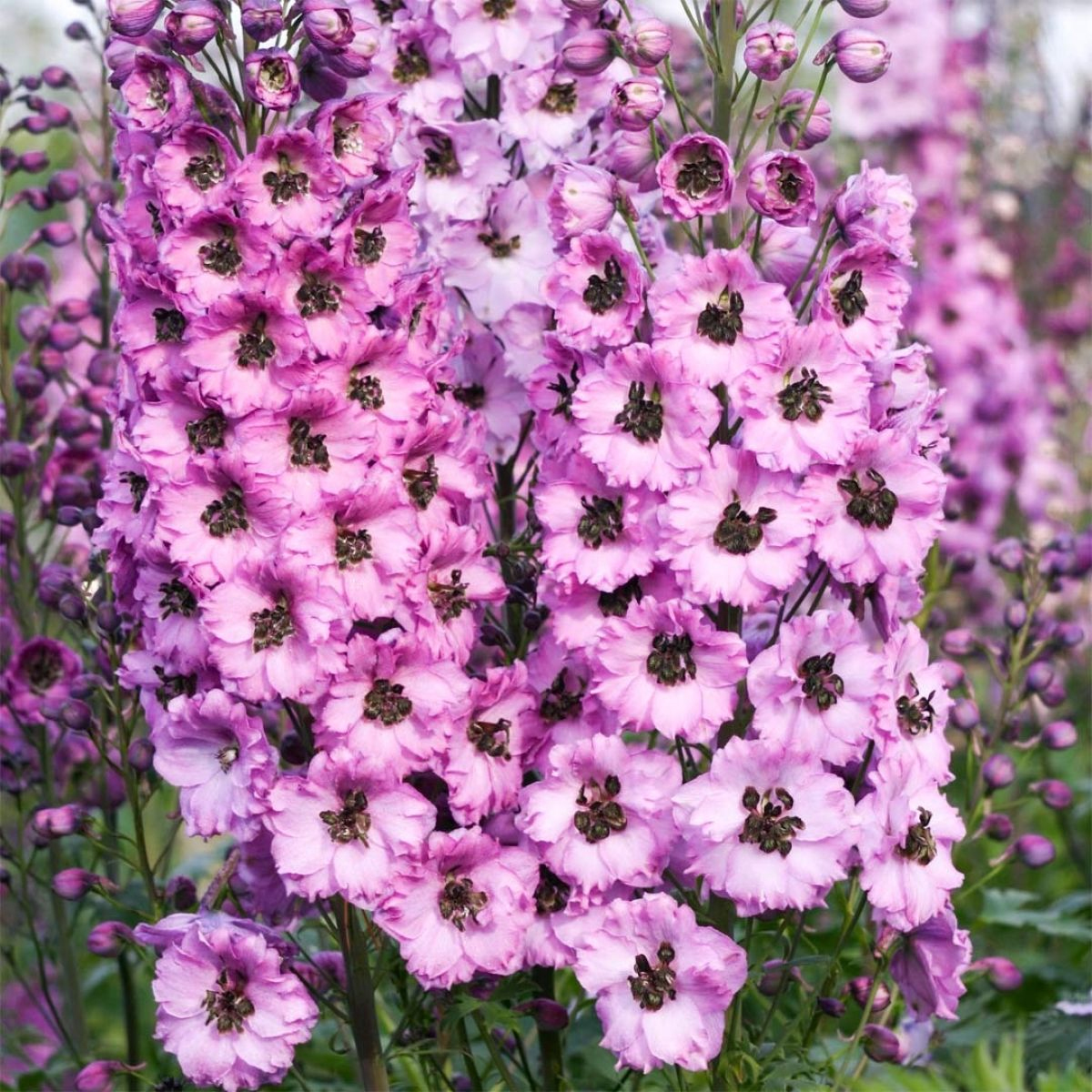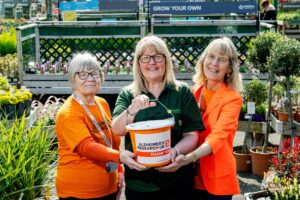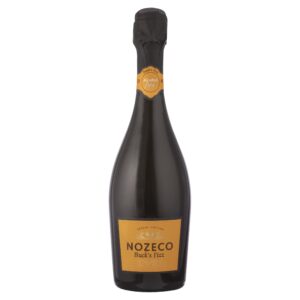

Colin Parton has grown a Taj Mahal in his back garden near Leeds. He grew it from seed. He collects spires. Each one is a memory of his late wife who died in 2014. When he opens the garden and its 100+ delphiniuums to the public, he raises funds for Cancer Research.
The Yorkshire-based gardener and widower, Colin Parton has been granted National Plant Collection status by horticultural conservation charity Plant Heritage. Parton’s impressive collection joins over 700 other National Plant Collections in the UK, which as a collective help to promote biodiversity and mitigate environmental challenges.
Parton saw delphiniums for the first time at the Harrogate Spring Flower Show. “They were magnificent with names like Kestrel, – Conspicuous, Michael Ayres, Kestreland Ta Mahal. I’ve grown them since I was a gardening apprentice, and my goal is stopping these wonderful, majestic cultivars and garden staples from being lost forever. I want to help others build their own collections so that these beautiful cottage garden plants continue to flourish for many years to come. Seeing the joy they bring to so many people is just wond
The UK’s largest collection of delphiniums is held at Delph Cottage Garden, south-east of Leeds. The collection includes 21 rare cultivars, including Delphinium elatum ‘Bambi’, ‘Boudicca’ and ‘Taj Mahal’, which are classed as Endangered on Plant Heritage’s Threatened Plants Programme.
Colin’s secret is “plenty of organic muck” and re-locating slugs and snails.
And avoiding windy spots!
Delphiniums are members of the buttercup family (Ranunculaceae). The word derives from the Greek delphinos, meaning dolphin, probably because of the shape of the opening flowers. The name, larkspur, dates to Tudor times.

Most delphiniums are hardy perennials. The Elatum Group of delphiniums are the tallest type, with spires of single or double flowers reaching up to 2m. Belladonna delphiniums are shorter, with a looser, single flowers. ‘Pacific Hybrids’ were developed in the 1950s and 1960s, and are short-lived perennials or biennials. ‘Magic Fountains’ are more suitable for smaller gardens.
Adds Parton : “I welcome any donations of named cultivars I do not hold, so if anyone has any in their gardens and would be willing to donate a cutting or plant, I would be delighted to give a permanent home as part of my collection. They would also be propagated so the cultivar prospers for many more years. Sadly, so many delphiniums have been lost over the last 20 years and I am keen to stop this happening to any more of the named Delphinium elatum cultivars.”
June and July blooming delphiniums are stalwarts of cottage gardens, They are the sentinels and Queens of The Border.
They are a favourite of King Charles. “The gloriously apparelled delphinium with its impeccable bearing and massed in platoons, holds pride of place in my botanical affections,’ the King has said via the Royal Family X account.
Once they have finished blooming, delphiniums should be cut down to the ground. Advises Colin : “You can mulch around the plant which will die back over winter to reemerge next spring. Support is crucial for these tall plants. Thinning out is important. So is a high nitrogen mix, moving on to a potash feed. Delphiniums are hungry plants. They don’t like to get wet so if you are on clay or heavier soil, incorporate grit at the bottom of the planting hole and make sure to elevate pots off the ground over winter. If there is a frost , I cover the cuttings with a fleece. You can take seeds from flowering side shoots. If you sow them in spring, they will flower in early autumn in their first year before reverting to the normal flowering time.
You can grow delphiniums from seed. Many varieties are available from garden centres. Sow delphinium seeds from February to June, or in September or October. Sow in small pots or seed trays and keep at a temperature of around 50°-60°F.
Sutton’s offers Delphinium Mixed. Good-performing delphiniums include “Galahad”, “Cupid”, “Blue Jade”, “Conspicuous”, and “Cassius” which are available from online mail order specialists like Blackmore and Langdon, who also offer a 6 and 12 “True Blue Collection” representing their Chelsea Flower Show displays. Roots Plants offers “Dark Blue Black Bee”, “ Blue Nile”, “Pure White”, “Strawberry Fair” and frilly, rosette “Highlander Moonlight. Home Farm offers stately, statuesque varieties like Alice Artindale Rose Darling Sue and Marilyn Clarissa.








